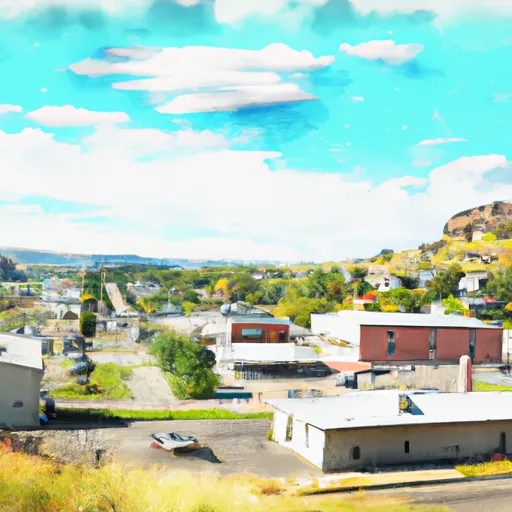-
 Snoflo Premium
Snoflo Premium
Get unlimited access to all our content
With no Ad interruptions! - Start Your Free Trial Login with existing account
Proctor
Eden Index
Climate
7.3
•
Recreation
4.8
•
Community
•
Safeguard
4.6/10

Proctor, Montana is a small unincorporated community located in the Flathead County. Situated in the northwestern part of the state, Proctor enjoys a continental climate with warm summers and cold winters. The average high temperature in summer reaches the mid-70s°F (around 24°C), while winter temperatures often dip below freezing, with average lows in the 20s°F (around -6°C). Proctor receives an average of 30 inches of precipitation annually, with the majority falling as snow during the winter months.
Hydrologically, Proctor is surrounded by numerous lakes and rivers. The pristine waters of Flathead Lake lie to the south, offering ample opportunities for boating, fishing, and water sports. The Flathead River, renowned for its scenic beauty, flows nearby and provides excellent opportunities for kayaking, rafting, and fly fishing.
Outdoor recreation enthusiasts also have access to the nearby Swan and Mission Mountain Wilderness areas, which offer extensive hiking and backpacking trails, as well as opportunities for camping and wildlife viewing. Overall, Proctor's climate, hydrology, and outdoor recreation options make it an attractive destination for nature lovers and those seeking to explore Montana's natural beauty.
What is the Eden Index?
The Snoflo Eden Index serves as a comprehensive rating system for regions, evaluating their desirability through a holistic assessment of climate health, outdoor recreation opportunities, and natural disaster risk, acknowledging the profound impact of these factors on livability and well-being.
Climate Health Indicator (CHI): 7.3
Proctor receives approximately
488mm of rain per year,
with humidity levels near 68%
and air temperatures averaging around
6°C.
Proctor has a plant hardyness factor of
5, meaning
plants and agriculture in this region thrive during a short period during spring and early summer. Most
plants will die off during the colder winter months.
By considering the ideal temperature range, reliable water supplies, clean air, and stable seasonal rain or snowpacks, the Climate Health Indicator (CHI) underscores the significance of a healthy climate as the foundation for quality living.
A healthy climate is paramount for ensuring a high quality of life and livability in a region, fostering both physical well-being and environmental harmony. This can be characterized by ideal temperatures, reliable access to water supplies, clean air, and consistent seasonal rain or snowpacks.
Weather Forecast
Streamflow Conditions
Pend Oreille
Area Rivers
Pend Oreille
Snowpack Depths
Pend Oreille
Reservoir Storage Capacity
Pend Oreille
Groundwater Levels
Recreational Opportunity Index (ROI): 4.8
The Recreational Opportunity Index (ROI) recognizes the value of outdoor recreational options, such as parks, hiking trails, camping sites, and fishing spots, while acknowledging that climate plays a pivotal role in ensuring the comfort and consistency of these experiences.
Access to outdoor recreational opportunities, encompassing activities such as parks, hiking, camping, and fishing, is crucial for overall well-being, and the climate plays a pivotal role in enabling and enhancing these experiences, ensuring that individuals can engage in nature-based activities comfortably and consistently.
Camping Areas
| Campground | Campsites | Reservations | Toilets | Showers | Elevation |
|---|---|---|---|---|---|
| Big Arm State Park | 40 | 2,932 ft | |||
| Tally Lake | 51 | 3,375 ft | |||
| Whitefish Lake State Park | 25 | 3,012 ft | |||
| Lake Mary Ronan State Park | 25 | 3,771 ft | |||
| West Shore State Park | 26 | 3,069 ft |
Nearby Fishing
Nearby Ski Areas
Catastrophe Safeguard Index (CSI):
The Catastrophe Safeguard Index (CSI) recognizes that natural disaster risk, encompassing floods, fires, hurricanes, and tornadoes, can drastically affect safety and the overall appeal of an area.
The level of natural disaster risk in a region significantly affects safety and the overall livability, with climate change amplifying these risks by potentially increasing the frequency and intensity of events like floods, fires, hurricanes, and tornadoes, thereby posing substantial challenges to community resilience and well-being.
Community Resilience Indicator (CRI):
The Community Resilience Indicator (CRI) recognizes that education, healthcare, and socioeconomics are crucial to the well-being of a region. The CRI acknowledges the profound impact of these elements on residents' overall quality of life. By evaluating educational resources, healthcare accessibility, and economic inclusivity, the index captures the essential aspects that contribute to a thriving community, fostering resident satisfaction, equity, and social cohesion.

